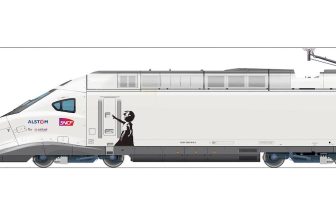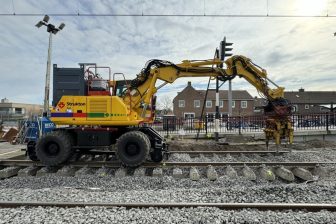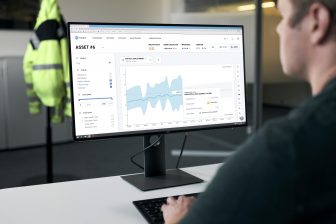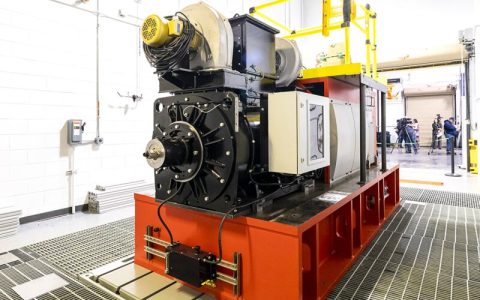
US research project to develop hydrogen combustion engine for rail
American locomotive manufacturer Wabtec and researchers from the Argonne National Laboratory (ANL) and Oak Ridge National Laboratory (ORNL) will work on a collaborative research to develop locomotives powered by a hydrogen combustion engine. Software developer Convergent Science will also work on the project, being specialised in computational fluid dynamics and simulations.
Trains running on hydrogen fuel cells are already running, the first ones having entered regular passenger service in Germany earlier this year. For hydrogen combustion engines, application in rail is not yet the case. The difference between the two is that with fuel cell trains, although the energy source is hydrogen, the trains run on electrical power. In the fuel cell, heat is generated by cold combustion in which hydrogen and oxygen react, and this is converted into electrical energy which is transferred to the traction battery. A hydrogen combustion engine for trains works more similarly to the engine of diesel trains, which are the ones that will have to be replaced in order to become climate-neutral.
Although on a small scale, there are already cars running on a hydrogen combustion engine, but no trains with this technology have been fully developed. “While hydrogen has been used in light-duty combustion engines, it is still a very new area of research in railway applications”, said Muhsin Ameen, Argonne senior research scientist. The Argonne National Laboratory is part of the U.S. Department of Energy.
“To reduce carbon dioxide emissions to net zero by 2050, we must make dramatic improvements in energy efficiency and emissions in the overall transportation system, including railways”, said Ameen. Hydrogen can be a low-emission fuel, however that mainly depends on the source of the energy used to create the fuel. Coming from sustainably sourced wind or solar power it can reach near-zero-emissions, but the majority of hydrogen currently produced is ‘grey hydrogen’, produced with energy from fossil fuels. According to the International Renewable Energy Agency (IRENA), over 95 percent of hydrogen production is fossil-fuel based, as of the end of 2021.
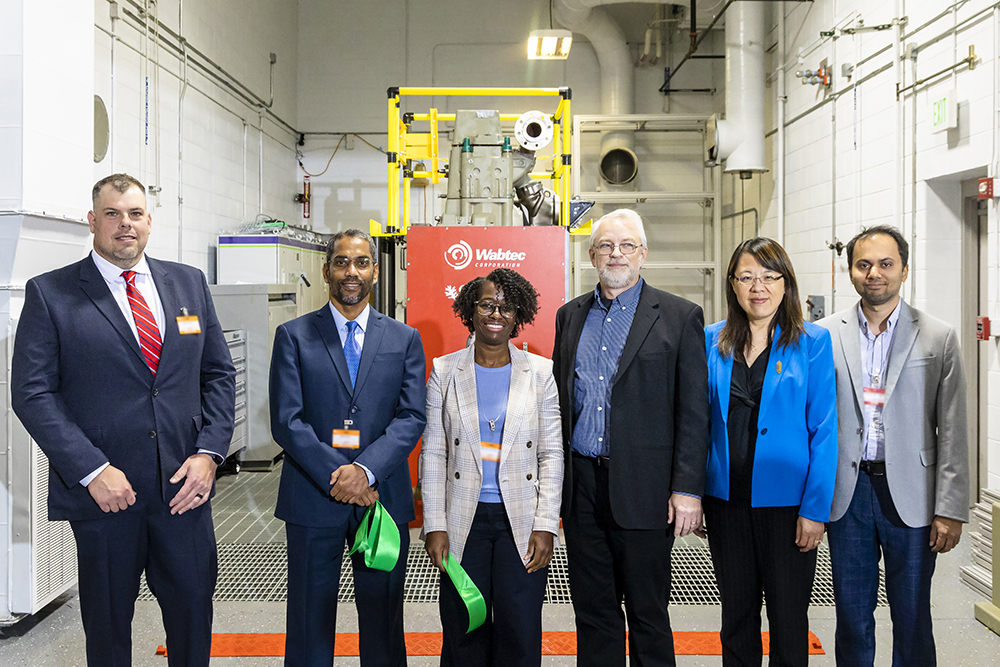
Technology for existing and future locomotives
In a four-year project, rail technology provider and major manufacturer of freight locomotives Wabtec and research partners aim to develop hardware and control strategies for the engine. It will run on both hydrogen and diesel fuel to demonstrate the viability of using alternative fuels, and should be able to run on 100 percent hydrogen fuel. The goal is to design train engines that will deliver the same power, range and cost-effectiveness as current diesel technology, according to the project partners.
“The hydrogen engine technology can be used both for existing and future locomotives”, said Josh Pihl, an ORNL researcher and group leader for emissions research. Each year, the North American rail fleet emits approximately 87.6 billion pounds of carbon dioxide, a major driver of climate change, according to news statement from the project partners.
The researchers from the multidisciplinary team kicked off the project and celebrated the installation of Wabtec’s single cylinder dual-fuel locomotive engine in the US National Transportation Research Center during an event on November 9.
Project phases
In a first phase of the project, the ORNL team will work on hardware changes for retrofitting locomotives. Their goal is to reduce CO2 emissions from the roughly 25,000 locomotives already in use in North America. Locomotives have a service life of more than 30 years, so replacing the entire fleet with new vehicles would take decades, and as mentioned in the statement, the costs of building a single coordinated electrified rail system across North America is expensive.
During the second phase of the project, Argonne will create a modelling framework to study combustion and emission control technologies used in hydrogen combustion engines, having “more than a decade of experience in modelling hydrogen injection and combustion”. Experts in fuel injection, kinetics and combustion modelling, design optimisation, high performance computing and machine learning will take the project from start to finish.
At the same time, ORNL and Wabtec will continue to alter the engine hardware to increase the amount of hydrogen that can be used. The team aims to completely replace diesel with hydrogen or low-carbon fuels in new locomotives. The project is funded by the Vehicle Technologies Office under DOE’s Office of Energy Efficiency and Renewable Energy and Wabtec. In-kind contributions are provided by Wabtec and Convergent Science.
Hydrogen combustion engine could play a large role in rail
Not only in the US is the use of a hydrogen combustion engine being studied and developed. Sittipan Reinold, Program Lead Diesel Exit Rail at Deutsche Bahn, said that the hydrogen combustion engine will also in Germany play a role in reducing rail emissions in a RailTech webinar earlier this year.
The developments in hydrogen and battery trains and the associated infrastructure such as recharging and refuelling are the central theme of the Rail Infra Forum on March 15-16 2023 in Berlin. From alternative fuels and batteries in passenger rail to on-track machines and recharging batteries under catenary. The programme and speakers can be found on the event website.
Read more:

